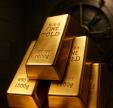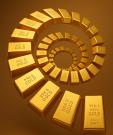Have We Seen the Last Fed Rate Hike?
Introduction by vronsky -
Nationally acclaimed market pundit and analyst, James B. Stack of InvesTech Research, has authorized the reprint of his insightful analysis of historic interest rate increases by the Federal Reserve Board. We are all grateful to Mr. Stack for sharing his exhaustive research and incisive observations on one salient aspect of the market - which may eventually have a significant impact upon stock prices. Here are his insightful thoughts verbatim.
-------------------------------------------------------------------------------------------------------------------------
In what was perhaps the most pre-announced rate hike in history, the Federal Reserve raised the Federal Funds rate 1/4% in late April. Actually, the bond market had already tightened a full 1/2% since last December. And by leaving the Discount Rate unchanged at 5% even, this carefully planned move was obviously aimed more at Wall Street's exuberance than the inflationary fires.
Nonetheless, the latest reading of the Future Inflation Gauge from Dr. Geoffrey Moore's Economic Cycle Research Institute indicates "underlying inflation pressures have increased noticeably, and they are still increasing." In addition, virtually every leading employment gauge shows the labor market is going to get tighter in the months ahead. So what are the chances of another rate hike from the Fed?
Let's review the tightening shifts of the Federal Reserve Board during the past 40 years, beginning with the first 1/4% increase in short-term interest rates:
| Past Federal Reserve Rate Increases 1953-1997 | |||
| Year | No. Months to 2nd Hike |
Total Rate Increase |
Period of Total Increase |
| 1954 | 4 | 3.0 % | 3.4 years |
| 1958 | 2 | 4.0 % | 1.7 years |
| 1961 | 8 | 3.3 % | 5.2 years |
| 1967 | 2 | 4.6 % | 2.7 years |
| 1971 | 2 | 2.0 % | 0.5 years |
| 1972 | 4 | 6.3 % | 2.6 years |
| 1975 | 1 | 1.4 % | 0.4 years |
| 1976 | 4 | 11.20% | 3.3 years |
| 1980 | 1 | 10.30% | 0.5 years |
| 1983 | 2 | 3.0 % | 1.7 years |
| 1986 | 9 | 1.9 % | 1.0 years |
| 1987 | 5 | 3.8 % | 1.5 years |
| 1994 | 4 | 2.5 % | 1.0 years |
| 1997 | ? | ? | ? |
| Average | 4 | 4.1 % | 2.0 years |
Most notable:
- The 2nd rate hike usually followed within 2-4 months after the first. That means another increase in the Federal Funds Rate (plus a 1/2% Discount Rate hike) is probable if the economy doesn't cool in the FOMC's meeting in the coming months.
- In no instances, did short-term interest rates increase less than 1.4 percentage points before reversing. Indeed lousy odds for those pundits claiming the recent 1/4% hike was the last.
For those investors who think multiple rate hikes are necessary to "kill the bull" (the old 3-Steps-and-a-Stumble rule), here's a caveat about the disastrous first rate hikes of the past:
1929: Although not the first rate hike, the 1% Discount Rate increase in August was the first in over a year. Subsequently, the DJIA crashed -48% within 3 months.
1946: One Discount Rate hike in April is all that was necessary to trigger a stock market peak the next month, as the DJIA slid -23% during the next 5 months.
1962: Although the 1962 Crash is blamed on the confrontation between President Kennedy and U.S. Steel, the stock market peaked the same month interest rates jumped 1/2%. Within 6 months, the DJIA had tumbled -27%.
1987: Even after 7 Discount Rate cuts over 3 years, it only required ONE Discount Rate hike in September 1987 to help trigger the 1987 Crash - and a -36% DJIA loss in 3 months.
My advice? Don't stick your head in the sand regarding the Fed's recent rate hike. It may or may not have triggered a full-scale bear market. But unless the economy cools or the stock market tanks, it won't be the last.
Evidence Of A Bear
If It Walks Like, and Growls Like... The most compelling evidence that we've now entered a bear market lies in just a few areas: bonds, bellwethers, breadth... and a dramatic shift in investor psychology. Some of this evidence only confirms "some type" of market top, while other portions scare the dickens out of me.
First, let's glance at the updated 30-year T-Bond. As expected, yields have risen above the critical 7% threshold (7.1%) as bonds have fallen to test their 2-year lows. One strong economic report is all that's required to break that support. This is a classic bear market trigger.
Another element that reveals some kind of market top is the bellwether DJ Utility Index. Note that prior to the '87 Crash, the 1990 Bear Market, and even the 1994 correction, this bellwether index peaked and turned south before the blue chips. It's done it again... and continues to tumble ahead of the market. Since its peak in mid-January this year, the DJUA has declined almost 15% in recent months - although at the momenet it is down only 10%!
|
Don't Ignore The |
This following evidence is so compelling, it has all but convinced me that the "big bear" is here. Beginning last summer, breadth (or participation) began falling apart on the NASDAQ. This OTC Advance-Decline Line tumbled at the fastest rate since just prior to the 1987 Crash. The market didn't crash... but instead both the DJIA and NASDAQ climbed up to new record highs early this year - new highs totally unconfirmed by this OTC A/D Line. It's in a freefall again now...
There's only one prior instance in the 25 year history of this data, that the OTC A/D Line has tumbled to bull market lows as the NASDAQ Index stretched to new bull market highs. That was in late 1972, just prior to the biggest bear market of the past 50 years [when the S&P 500 plummeted -48% and the NASDAQ suffered a free fall of -60%].
Affirming the sharp breakdown in secondary stocks, the AMEX (American Stock Exchange Index) has recently fallen in 13 consecutive sessions. Historically, that has only occurred:
(a) early in the 1969-70 bear market;
(b) twice during the 1973-74 bear market;
(c) once during the 1984 high-tech washout; and
(d) in 1990, before the 1990 bear market.
Another, more technical model I follow developed for tracking breadth on the New York Stock Exchanges linear regression, it monitors the historical divergence between the S&P 500 Index and the NYSE Advance-Decline Line. In simple terms, it measures how overpriced the S&P Index has become in an aging bull market when it's no longer supported by breadth. The point at which a bear market becomes probable is where we're at today!
Investor psychology is nearly impossible to quantify; yet it's obvious that there's been a dramatic shift in attitude. Instead of "hoping" for a correction or buying opportunity, a growing number of investors are hoping for any rally that might let them get out even. The reasons clearly lie in the carnage which is not showing up in any of the blue chip or capitalization-weighted indexes...
Let's look at the performance of several well known stocks; keep in mind these are real stocks with real shareholders suffering real losses. Moreover, these past couple months marked the start of a major meltdown for momentum stocks and mutual funds.
Mercury Financial - an overnight loss of -86%! after announcing "accounting irregularities" and the disappearance of their chief accounting officer. Centennial Technologies - an overnight loss of -81% (and -94% from December's high) after launching a probe into the accuracy of their earnings and relieving their chief financial officer of his duties. Employee Solutions - an overnight loss of -59% (and -78% from February's high) after delaying the release of their less-than-expected 4th quarter earnings. Idexx Labs - an overnight loss of -62% (and -74% from October's high) after a sour 1st quarter earnings report.
I could go on and on, with Unison Healthcare, Corporate Express, Medic Computer Systems, Verilink, and others... ALL crashing within the last month or two. The speculative mania that characterized the final stage of the 1990-97 bull market is unraveling at the seams. AND IT'S NOT SHOWING UP IN ANY MAJOR INDEXES!
MY CURRENT STRATEGY
|
Take Defensive Measures: If you're holding stocks that you wouldn't want to ride through a major bear market with losses of -40%, then sell them. No one yet knows if this is definitely a bear, let alone a big bear. But technically and historically, the odds favor it. I'd prefer not to underestimate the downside risk at this time. |
Maximize Your Cash Return: Since the Fed's rate hike, 3-month and 6-month T-bills are yielding 5.3% and 5.5% - the equivalent of 5.8% and 6.1% in taxable accounts in states where Treasury interest is exempt from state income taxes. Ladder (vary) the maturities you purchase through your broker in order to have cash available when we reach a buying opportunity.
Don't Ignore The Risk of a Crash: Statistically, odds are against it. But historically, the 3 necessary ingredients are present: extreme overvaluation, a correctionless bull market, and a sharp reversal in investor psychology. Such crashes seldom occur this soon after the market peak or this close to the top. Both crashes in 1929 and 1987 triggered after the DJIA was down 10% and exactly 55 days after the market top. For your curiosity, those figures equate to a drop under DJIA 6375, and a target date of April 14th (based on the S&P 500) or May 5th (based on the DJIA peak) . Again, don't plan on a crash; but don't ignore the possibility.
Diversify with Prudence: The past couple weeks have shown there's little place to hide in a real bear market. Negative bond models do not show long-term bonds as a favorable trade-off. Emerging markets are tightly linked to the U.S. market. And any enthusiasm for other G-7 markets should be tempered by this news release by the OECD:
"World stock markets are displaying some 'worrisome aspects,' with a growing risk of 'speculative excesses,' the Organization for Economic Cooperation and Development said in its March financial market trends report." Bloomberg -- 3/17/97
I believe now is an appropriate time to take positions in REIT's, gold and oil stocks, or consumer non-cyclical stocks if this recent market slide levels off and evidence of an inflationary bear increases (if leading inflation gauges climb higher).
Keep Short Positions Modest: We're in uncharted waters waiting for bear market confirmation from key long-term models [below]. As a diversified short position, I have added a 10% position in the Rydex Ursa mutual fund and will likely increase that allocation based on developing evidence. That position is suitable for purchase as long as the DJIA holds above 6200. Short positions in individual stocks will be considered only after full confirmation of a bear market, and if low-risk entries are still available. Aggressive traders should focus on the most vulnerable sectors, including high-tech, brokerage, and banking.
Think "Safety First - Profits Second": Remember, in a bear market, the primary objective is to be the investor with funds to buy the bargain basement specials when it's over. Just as speculation gets carried away in the final stage of a bull market, it's easy to overspeculate in a bear market.
|
Be Prepared to Move Quickly: Other than possible inflation hedges in a late-stage bull market, the next profit opportunity could unfold in bonds... if the stock market drops into a freefall. In addition, it may be prudent to shift cash reserves from a money market fund to the safety of T-bills or a Treasury-only money market fund if any collapse carries the DJIA under 5700. |
James B. Stack
InvesTech Research*
(April - 1997)
-------------------------------------------------------------------------------------------------------------------------
vronsky Observation -
It is meaningful to make a couple of comments about the average Fed interest rate hikes during the last 40 years. We all well know that over time all cycles trend to the mean - that is they drift toward the average in the long-run. Please recall the study's 40-year averages:
- It took 4 months for the second rate hike
- 4.1% was the total average rate increase
- The average period for the total rate increase to occur was 2.0 years
If one believes that we will experience an 'average' occurance in this cycle, then the following predictions are feasible:
- Expect the next Fed tightening to occur around August of this year
- Expect the Fed Funds' rate to eventually reach 9.6%
- Expect the rate increases to reach their zenith by April 1999
In the meantime, we all know what happens to a stock market under this scenario. As Betty Davis once said in her Oscar-winning role of "All About Eve,"Gentlemen, buckle-up your seatbelts because it's gonna be a bumpy ride!"
















